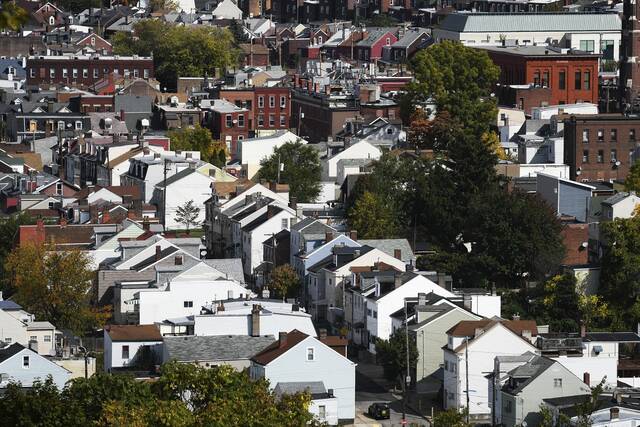Proposal would expand inclusionary zoning to Pittsburgh's Bloomfield, Polish Hill
A proposal before Pittsburgh City Council would expand inclusionary zoning into the city’s Bloomfield and Polish Hill neighborhoods.
Inclusionary zoning requires that market-rate housing developments with 20 or more units incorporate affordable housing into the plans.
In the case of Bloomfield and Polish Hill, developers would be required to earmark 10% of their housing units as affordable housing units, said Phillip Wu, the Department of City Planning’s neighborhood planner for Bloomfield.
“It makes affordable housing part of a package deal to be able to build market-rate housing,” Wu said.
Units that are rented would need to be affordable to people making 50% of the area median income, while units that are sold would need to be affordable to homeowners making 80% of the area median income, Wu said. The median income in Pittsburgh is $59,400, making 80% of the median income $47,500 and 50% of the median income $29,700.
The units can’t be priced at more than 30% of the household’s income, based on the area median income requirements, he said. Housing units have to remain affordably priced for at least 35 years.
Several residents and community leaders weighed in on the proposal during a City Council public hearing Tuesday.
Jody Lincoln, a Bloomfield resident, said she wanted to see the success of inclusionary zoning in neighboring Lawrenceville spread to her neighborhood.
“Inclusionary zoning is one of the many tools that we have as a community to create affordable housing in our neighborhood,” she said.
John Rhoades, chair of the housing and development committee for the Polish Hill Community Association, said his organization is in favor of inclusionary zoning in their neighborhood.
“Community members are being priced out,” he said.
Rhoades cited statistics showing that the median price more than tripled from 2015 to 2018, with the median price for a home in Polish Hill jumping from around $70,000 to more than $210,000.
“There are imminent developments that could reshape our neighborhood, and we want to be able to preserve a balanced approach to development that ensures people of all income levels can find a home,” he said.
Similarly, affordable housing options “are only becoming harder to find” in Bloomfield, said Sam Spearing, the housing and mobility coordinator for Bloomfield Development Corp.
Spearing, a renter in Bloomfield, said the neighborhood would be a perfect place for low-income residents who would qualify for affordable housing to have easy access to resources and accommodations. The neighborhood is easily walkable and is well served by public transportation, he said. Plus, Bloomfield has grocery stores, farmers markets and health care facilities.
John Carson, a Polish Hill resident, said inclusionary zoning could help ensure the neighborhood retains its character and diversity.
“It’s a very wonderful mix of people, people from all walks of life, different income levels,” he said, adding that he’d like to see a proposal requiring more than 10% of units be affordable housing units.
Builders, landlords oppose
Jim Eichenlaub, executive director for the Builders Association of Metropolitan Pittsburgh and the Apartments Association of Metropolitan Pittsburgh, spoke against the proposal. While the organizations he represents support affordable housing, he said, the government mandates within inclusionary zoning are problematic for them.
“The ability to produce new housing at an affordable cost is challenging due to many factors,” he said. “Rising interest rates, material and labor costs are all factors impacting the price of the homes.”
He also said that inclusionary zoning is one example of a government regulation that could actually increase housing costs.
“A recent study of the National Association of Homebuilders determined the price of a home has increased by 23.8% for new homes and by 30% for multifamily projects due to government regulations alone,” Eichenlaub said.
Councilwoman Erika Strassburger said inclusionary zoning should be “a great step in the right direction” to address the city’s affordable housing crisis. She said she would like to have conversations about expanding inclusionary zoning into other neighborhoods, including Oakland.
Councilwoman Deb Gross, who represents Bloomfield and Polish Hill, said she’s supportive of the inclusionary zoning measure. She said she has heard calls from residents and community groups for requiring more than 10% of units to be earmarked for affordable housing, adding affordable housing requirements for developments with fewer than 20 units and including lower affordability rates.
“There is certainly a call for this to be even more deeply affordable,” Gross said.
Julia Felton is a TribLive reporter covering Pittsburgh City Hall and other news in and around Pittsburgh. A La Roche University graduate, she joined the Trib in 2020. She can be reached at jfelton@triblive.com.
Remove the ads from your TribLIVE reading experience but still support the journalists who create the content with TribLIVE Ad-Free.

